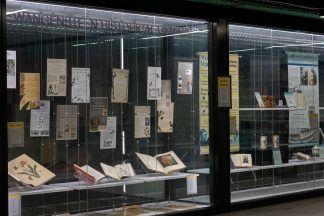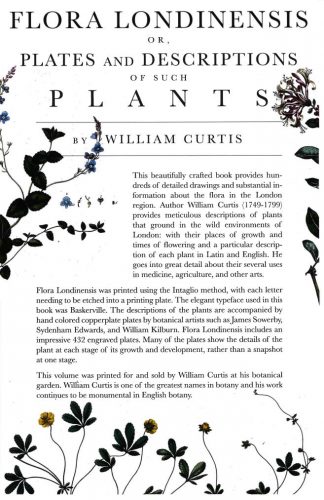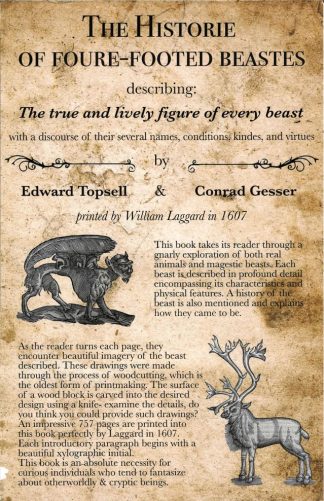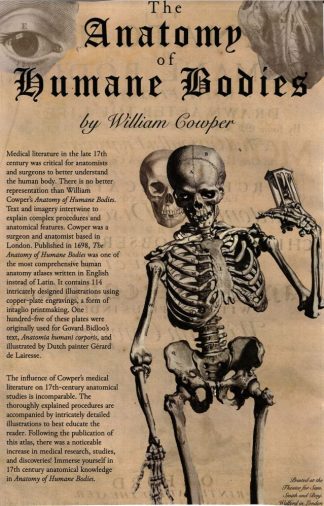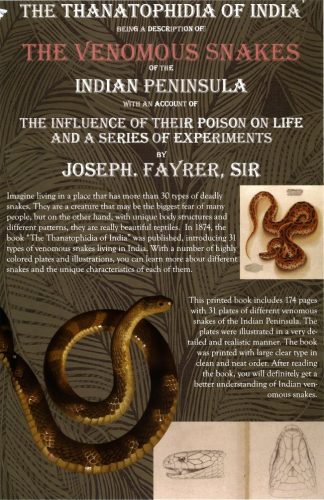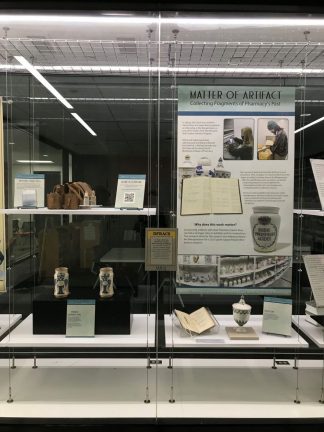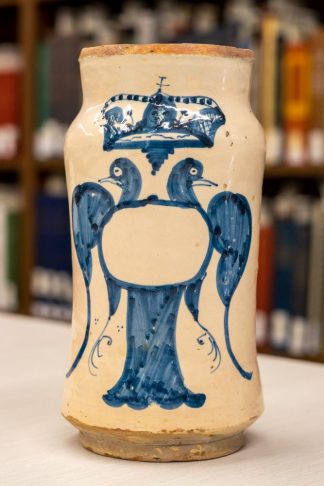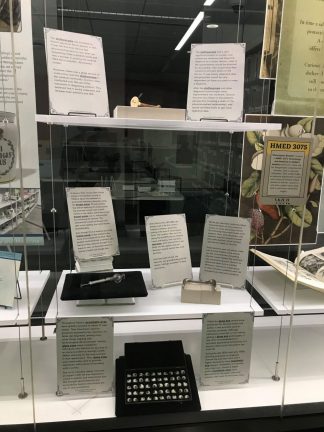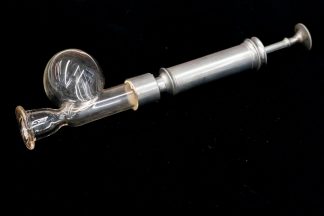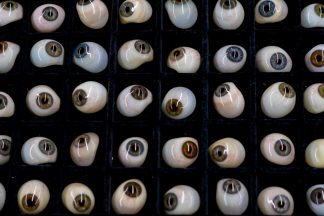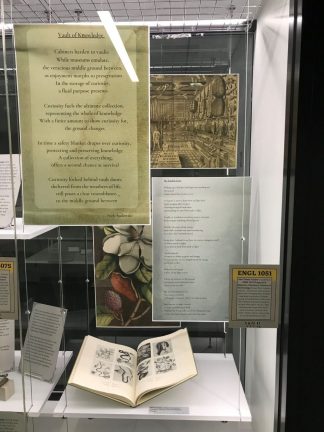By Anna Opryszko
Come see student success in action at the Wangensteen Historical Library of Biology and Medicine!
The Wangensteen Student Showcase is a new exhibit that explores how students from a variety of academic disciplines use historical materials from the Wangensteen in their coursework. Featuring the scholarly and creative output of thirty-eight undergraduate students, this exhibit demonstrates the Wangensteen’s commitment to fostering and strengthening student success, and celebrates the inspiring work that students from all academic disciplines produce when working with these historic collections.
About the exhibit
What: Student Showcase
When: January 13, 2023 – May 1, 2023
Where: Wangensteen Historical Library, 2-340 Phillips-Wangensteen Building (PWB) second floor concourse
Hours: Monday-Friday 8:30am-4:30pm, free and open to the public
Exhibit walkthrough
Curious about what’s included in this exhibit? Explore the photos below for a sneak peak!
History of Graphic Design
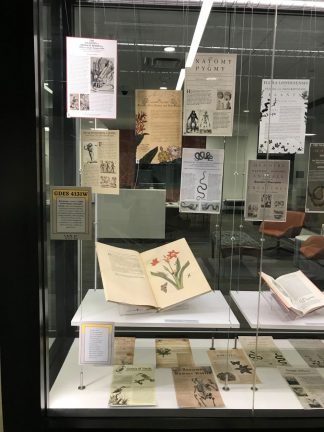 Bill Moran’s students in History of Graphic Design (GDES 4131W) spent two class periods exploring a selection of early printed books on anatomy, botany, and natural history that contain notable or exemplary printing and design elements. After choosing one book to focus on, the students each designed a prospectus, or a creative flier meant to entice a reader to a given book.
Bill Moran’s students in History of Graphic Design (GDES 4131W) spent two class periods exploring a selection of early printed books on anatomy, botany, and natural history that contain notable or exemplary printing and design elements. After choosing one book to focus on, the students each designed a prospectus, or a creative flier meant to entice a reader to a given book.
Women at the Wangensteen Internship
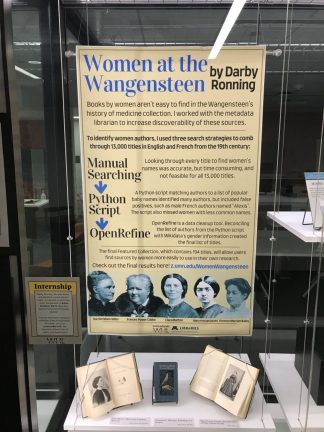
Darby Ronning, 4th-year history and statistical science double major, completed an internship under the direction of kalan Knudson Davis, Rare and Special Collections Metadata Librarian. In this project, Darby used three different search strategies to identify women authors within the Wangensteen’s collections. The goal of the study was to increase the discoverability of women authors in the history of medicine and inform potential future reparative efforts by populating a Featured Collection and creating a poster.
Dean’s First-Year Research & Creative Scholars Program
Olivia Olson and Sadie Wall researched pharmaceutical artifacts as part of the Dean’s First-Year Research & Creative Scholars Program (DFRACS), culminating in their project “Matter of Artifact: Collecting Fragments of Pharmacy’s Past.” DFRACS is a scholarship experience offered by invitation through the College of Liberal Arts, in which exceptional first-year, freshmen, or transfer students are awarded an opportunity to contribute first-hand in a research or creative project. At the end of their semester-long experience, Sadie said that she is “less intimidated by research now,” and that “it’s taken away a lot of the scary unknown.” Olivia plans to use what she learned to work more with archives and material evidence in the future. Explore the exhibit’s poster and Olivia and Sadie’s StoryMap to find out more about their project.
This Spanish ointment jar is one of the artifacts that Sadie and Olivia researched, and is displayed in this exhibit. It was purchased in Madrid, Spain by Minneapolis art patron Mary Heffelfinger in 1927, and is a great example of Talavera Pottery, a traditional Spanish pottery that comes from Talavera de la Reina, Spain.
Dr. Wulling’s archives claim that this medicinal saddle bag was “used by Dr. Moe in making his calls among the settlers along the Old Chicago Trail from Detroit to Chicago near the Indiana line.”
Technology and Medicine in Modern America
Christopher Kindell’s students in Technology and Medicine in Modern America (HMED 3075) spent five instructional sessions working with the Wangensteen collections this semester, both in class and individually, exploring topics such as diagnostic technologies, contraceptive technologies, and assistive technologies. Each student made an individual appointment to work with a historical medical artifact, observe its features, research it, and write a public history blog post in which they shared their insights. The featured students researched the stethoscope, the breast pump, Sims speculum, and prosthetic eyes.
Undergraduate student Ella Crawford wrote about this breast pump: “The breast pump design in the 1800’s allowed for a powerful suction device that a physician could manually control. This design led to doctors using it in practice to remove mammary abscesses. […] Even though this is a medical use of the breast pump, it also relates to the social environment at the time. Many people could overlook a woman’s pain because they were not thought of as equal to men, so this advancement in women’s health was a huge step.”
Undergraduate student Nabiha Chaudhry wrote about this set of model glass eyes: “Throughout history, prosthetic eyes have greatly evolved to better fit user needs. They have been used for purposes deemed to be cosmetic, for facial development, among many other things aligning with technological advancements. Initially, glass eyes were created for individuals who had lost an eye due to an injury/accident or through a birth defect allowing for the improvement in their appearance. Thus, glass eyes were historically used to provide individuals with a sense of normalcy within society. Due to its cosmetic nature, however, an expert’s skill set was required to create a realistic and customized eye. This brought about financial and accessibility barriers that limited the use of such prosthetics.”
Progress & Madness: Literature, Science & Technology
“Cabinets harden to vaults
While museums emulate,
the veracious middle ground between,
as enjoyment morphs to preservation
In the storage of curiosity,
a fluid purpose presents”
Ann Tandy-Treiber’s students in Progress & Madness: Literature, Science & Technology (ENGL 1051) flexed their creative muscles. During two class sessions held at the Wangensteen, students examined a selection of books, paying close attention to the ways that medical illustration functions as both information and art. After selecting the image they found most evocative, students then wrote creative pieces responding to or representing the work. The featured poems by undergraduates Nick Sadowski (quoted above) and Kaya Chaput were inspired by Ole Worm’s Museum Wormianum and Mark Catesby’s Piscium, serpentum, insectorum, aliorumque nonnullerum animalium.
An invitation
Interested in bringing your class in for a course-integrated instructional session? Have an idea for a project you’d like to do with our collections? Just email wanghist@umn.edu and we will be happy to discuss it with you!


